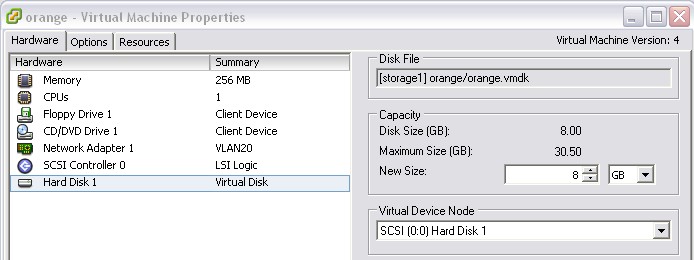

CREATE VMDK FROM FOLDER DRIVERS
Next, depending on the version of Windows, you may need to repair the OS so the proper drivers get installed since you've essentially moved your old computer's hard drive to a completely new set of hardware.Īs I said before, I don't think it's getting anywhere near Windows, it looks like it just can't find the OS in the first place. It was a Dell Vostro desktop if that helps. As data is added to a virtual drive, the.vmdk files develop in size, to a optimum of 2GN each. If you have stipulated that the virtual cd disk should be divided into 2GM chunks, the number of.vmdk documents is dependent on the dimension of the virtual disk. Haven't a clue! As the old machine has died, it's going to be hard to find out. A virtual storage is made up of one or more.vmdk data files. Not matching this is most likely the reason your screenshot is showing that error. How do I do that? I wouldn't know what to set, and looking at the settings for the VM, I can't see much to change.ĭid your old computer have a BIOS or use UEFI? That will determine the type of VM, gen1 or gen2. Next, you need to try and match the hardware as best you can. A virtual machine typically is stored on the host computer in a set of files, usually in a directory created by Workstation for that specific virtual machine. I'm not gettingĪnywhere near that stage here, it's not even seeing anything form which to boot. Import Drive will let you select a file to mount and New Drive will let you create either.
CREATE VMDK FROM FOLDER WINDOWS
I've had problems with OEM versions in VMs before, and all that happened was that Windows popped up a message saying it looked like it wasn't a genuine version of Windows. You can create and mount virtual drives for the VM in the Drives tab. is: 4.0kb in your folder: This is how it looks for my setup: Windows.10.vmdk choose this. This was not an OEM installation of Windows.Įven if it were, I don't see why that would be the cause of this error. Some VMware products create vmdk spans with different sizes. Most Windows installs are OEM and as such are only licensed for use on the original computer's hardware.


You are most likely not licensed to move an OS from the original hardware to a VM.


 0 kommentar(er)
0 kommentar(er)
